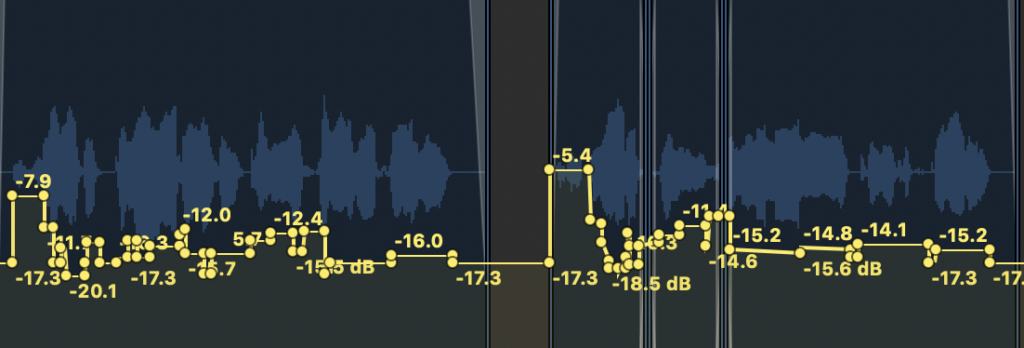Gain Staging is the act of managing the levels of your track. Automation can then give you the control to increase or decrease the volume so that it sounds equal and at a similar level throughout. By implementing gain staging and automation in your mix, you can immediately make your track sound more professional. So, here’s how to do it.
I personally like to focus on Gain Staging and Automation on vocal tracks as it creates a radio-ready sound. If you have an instrumental track it can work well with a lead instrument. In this case, it’s best to trust your ears as you don’t want to diminish any dynamics being performed.
The first step in good Gain Staging technique is creating a good recording level. Ideally you want your levels coming in at -18 dBFS but no more than -12 dBFS
I tend to apply some EQ on the main vocal channel and then send the signal to a vocal bus for compression etc. You want the automation to be on the main vocal channel NOT the bus channel.
Once you’ve got a good take you can then start automating your vocal paying attention to the level of each word and syllable and turning it up or down so that the sound is level with the rest of the recording. You basically don’t want any loud peaks or very quiet sounds the goal is to have each word and syllable at roughly the same level. If it helps you can insert a loudness meter just to keep an eye on your levels.
Once you’re done, the automation on your track can look a bit crazy but that’s perfectly fine. Hopefully, now you have a great vocal performance that levels out the loudness and quietest parts of your track to create an engaging performance. The great part about automation is that it leaves less work to do for the compressor so I’ve often found vocals sound a bit more vibrant.
I hope this technique helps even out your recordings and helps you craft that radio-ready track!

